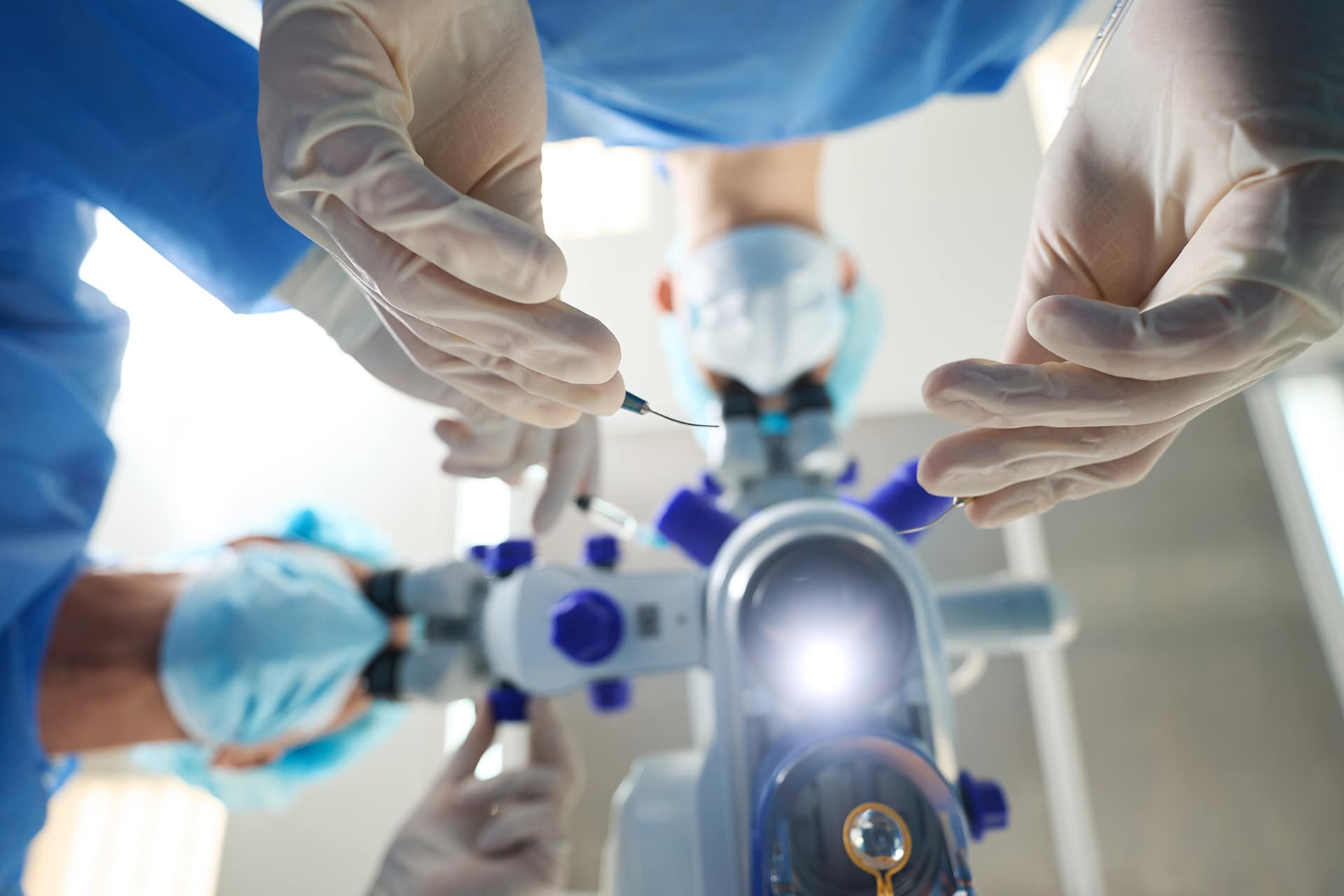In the world of vision correction, LASIK stands out as a revolutionary procedure that has transformed the lives of millions, freeing them from the hassle of glasses and contacts.
LASIK has advanced tremendously over the past 35 years. While it’s great for many patients, like any surgical procedure, LASIK comes with its own set of potential complications.
Understanding these complications, their prevalence, and how to mitigate risks is crucial for anyone considering LASIK surgery.
How Common Are LASIK Complications?
Firstly, it’s important to put the risk of complications into perspective. LASIK is generally considered safe and effective, with a high satisfaction rate among patients. According to the Refractive Surgery Council, the overall complication rate for LASIK is less than 1%.
The most common side effects are typically mild and temporary. These include temporary irritation, and glare or halos which typically improve over time as the eyes heal.
Serious complications such as corneal ectasia (a bulging of the cornea) or severe infections are extremely rare, occurring in less than 1% of cases.
Moreover, modern screening technology is able to prevent patients at risk for corneal ectasia from having LASIK. By excluding more of these “at-risk” patients, the incidence of serious complications is lower than ever.
Comparing LASIK Complications to Contact Lens Complications
It’s worth noting that while LASIK complications exist, they are often less frequent and severe compared to complications associated with long-term contact lens wear.
Contact lens wearers face a higher risk of eye infections, corneal ulcers, and other issues related to lens hygiene and extended wear.
The following are listed on the CDC website as complications and risk factors of contact lenses:
- Severe eye infections that can result in blindness affect up to 1 out of every 500 contact lens users yearly
- Improper contact lens care can result in serious eye infections
- Corneal inflammation which can be associated with infection, called keratitis, results in 1 million doctor and hospital visits each year, costing the U.S. healthcare system approximately $175 million
Additionally, LASIK offers a more permanent solution to vision correction, eliminating the need for daily maintenance and reducing the risk of complications associated with contact lens wear over time. The cost of LASIK is typically less than contact lenses in the long run.
What are Risk Factors for LASIK Complications?
While LASIK is generally safe, certain factors can increase the risk of complications. These may include:
Pre-existing Eye Conditions
Patients with certain pre-existing conditions may not be good candidates for LASIK. These conditions include the following:
- Too thin or irregular corneas
- Unstable vision
- Pregnancy
- active autoimmune disorders
- History of Herpes Simplex Keratitis
Read our full article on who should not have laser eye surgery for more details on this.
High Refractive Error
Patients with very high levels of nearsightedness, farsightedness, or astigmatism may have a higher risk of experiencing complications or achieving less optimal outcomes.
Age
Younger patients may still have growing and changing eyes. Generally, the cut-off age for LASIK is considered to be 18. However, some patients are stable before 18, while for others it may take a few more years. The changes to your cornea that LASIK makes are permanent. If your prescription is stable, you’ll get more longevity out of your LASIK.
Poor Candidate Screening
Choosing an experienced surgeon who thoroughly evaluates your candidacy for LASIK can significantly reduce the risk of complications.
What Are LASIK Complications?
While LASIK complications are rare, it’s essential to be aware of potential risks before undergoing surgery. Some of the most common complications include:
Irritation / STODS
Temporary irritation is among the most common side effects of LASIK. This occurs due to a disruption in tear film production during the healing process.
For years this has been confusingly referred to as “dry eye”, when for many of these patients, their tear film appears healthy, and their eyes are not dry.
This has given birth to the newer medical term STODS, which stands for “Surgical Temporary Ocular Discomfort Syndrome.”
The term STODS is a more accurate way of describing what is most often a temporary post-surgery irritation syndrome that improves over time. STODS can occur after many different eye procedures, such as cataract surgery or SMILE.
Check out this article for more information on STODS.
Glare and Halos
Glare and halos were a more common side effect of LASIK in the 1990’s. In Modern LASIK the risk of long-term glare and halos is low.
Moreover, there are certain patients who are more at risk for it. These include patients with extreme prescription, particular far-sighted prescriptions, and pre-existing moderate to severe dry eyes.
With modern lasers and their treatment profiles, such as wavefront-optimzed and wavefront-guided treatments, glare and halos are much less common.
Under-correction or Over-correction
In some cases, the desired level of vision correction may not be achieved, leading to under-correction or over-correction. Enhancement procedures may be needed to fine-tune vision.
Enhancements are common and routine for experienced LASIK doctors. For many patients these are even expected.
Enhancements are most common in patients with extreme prescription. It’s similar to putting a golf ball.
Sometimes you start really close to the hole, and you make the putt >99% of the time.
Other times you may be putting from 100 feet away, and the goal of the first putt is to just get it close so you can tap it in on your second putt.
For example, a patient with a prescription of -10.00 is more likely to need an enhancement than a patient with a -4.00 prescription. Similarly, LASIK for astigmatism can be less accurate for extreme prescription.
That said… Modern LASIK is very accurate even for high prescriptions and astigmatism.
Infection
While LASIK is performed under sterile conditions, there is a small risk of post-operative infection. This risk can be minimized through proper preoperative screening and postoperative care.
Flap Complications
The LASIK process includes creating a thin flap on the cornea’s front surface. This is lifted during the procedure, and the laser is applied to the inner layers of the cornea.
After the laser treatment is complete, the flap is placed back in position.
Flap complications were always uncommon. However, they are even more rare today with modern femtosecond lasers.
Since almost all LASIK in the United States is now bladeless, certain flap issues are almost never seen anymore.
Modern femtosecond lasers are more precise and consistent at creating flaps. Also, the flap geometry has a square edge that allows it to fit back in position like a jigsaw piece. This results in better re-positioning without slipping, sliding, or wrinkling.
Corneal Ectasia
This rare but serious complication involves a progressive thinning and bulging of the cornea, leading to distorted vision. Patients with thin corneas or a history of corneal conditions are at higher risk.
How to Prevent LASIK Complications
While LASIK complications are rare, there are steps you can take to minimize the risk:
Make Sure You’re a Good Candidate
LASIK is safe if you are a good candidate. Modern diagnostic testing is better than ever at determining who is a good candidate for LASIK… and who should consider other vision correction options.
Choose a Qualified Surgeon
Selecting an experienced ophthalmologist with a proven track record of success is critical. Research potential surgeons thoroughly and ask about their experience and complication rates.
Learn more about what to look for in a LASIK surgeon in our comprehensive article.
Undergo Comprehensive Preoperative Evaluation
A thorough eye examination will help identify any pre-existing conditions or factors that may increase the risk of complications. Be honest about your medical history and follow your surgeon’s recommendations.
Follow Postoperative Instructions
Proper postoperative care is essential for optimal healing and reducing the risk of complications. This may include using prescribed eye drops, avoiding rubbing your eyes, and attending follow-up appointments as scheduled.
Maintain Ongoing Eye Health
Even after LASIK, it’s important to prioritize eye health by attending regular eye exams, protecting your eyes from injury and UV exposure, and following a healthy lifestyle.
Consider Other Options
LASIK is not the best option for everyone. For some patients other procedures such as EVO ICL or Custom Lens Replacement may be better choices. If you are considering a vision correction procedure, it’s typically a good idea to consider a surgeon who offers all Modern Vision Correction procedures. This gives you the best chance of having the best procedure for your eyes and lifestyle.
Conclusion
Modern LASIK is a safe and effective option for vision correction, with a low risk of complications. By understanding the potential risks, taking preventive measures, and choosing a qualified surgeon, you can significantly reduce the likelihood of experiencing complications and enjoy the life-changing benefits of improved vision. If you’re considering LASIK, consult with a reputable surgeon to discuss your candidacy and address any concerns you may have. With proper care and guidance, LASIK can provide lasting clarity and freedom from glasses and contacts.







